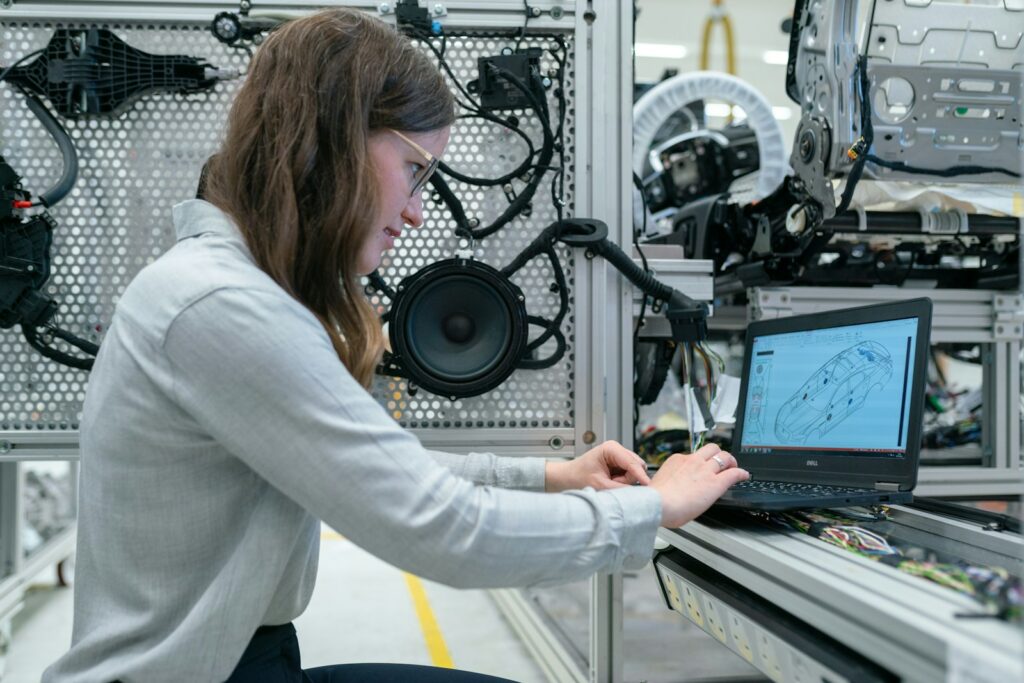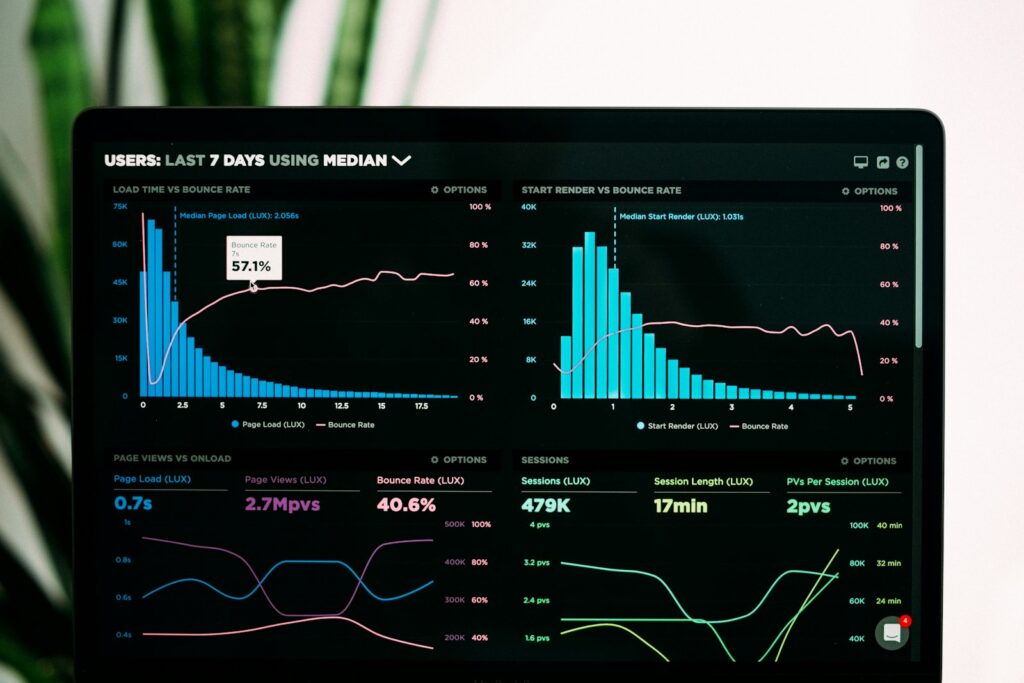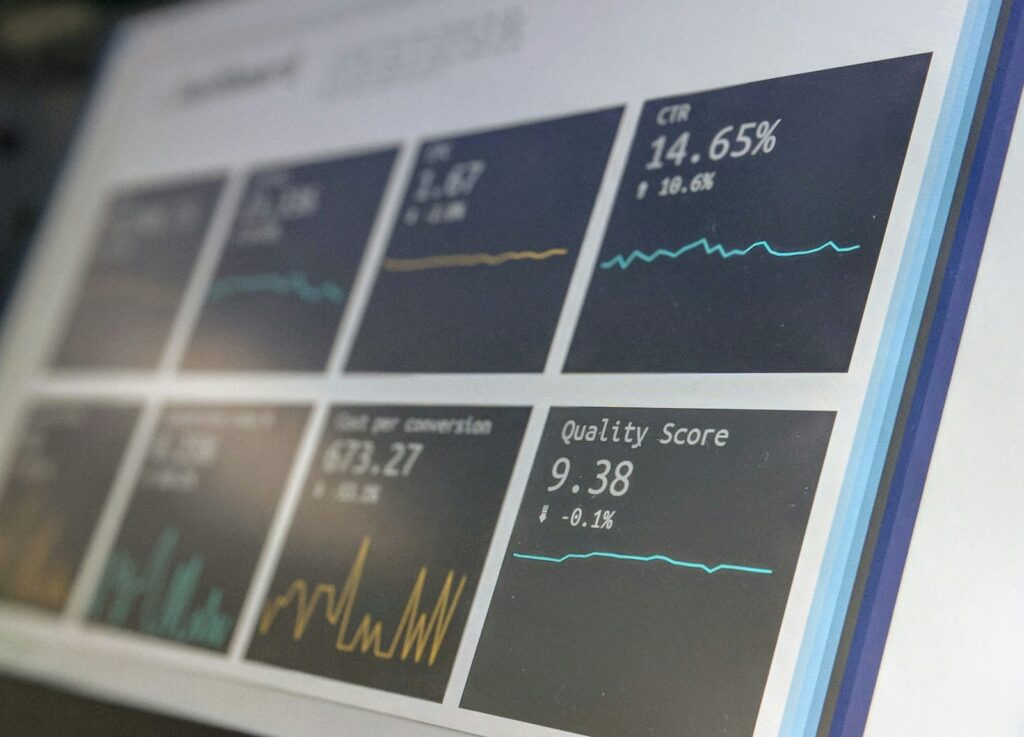
The modern technological landscape demands efficiency, precision, and the ability to master vast datasets. In this intricate tapestry, a programming language named Julia has emerged, not with Hollywood fanfare, but with the quiet, formidable power of a true disruptor. Born from MIT in 2012, Julia was conceived to bridge a persistent chasm: the trade-off between the expressive ease of scripting languages like Python and the raw speed of compiled powerhouses such as C/C++.
This audacious ambition has culminated in a language swiftly redefining benchmarks across an astonishing array of disciplines. Julia is more than a tool; it represents a philosophical shift, offering a high-level, dynamic environment that simultaneously delivers high-performance capabilities. Its design ensures modern scientists, engineers, and data analysts a seamless flow from concept to execution, unhindered by language barriers or performance bottlenecks. Julia stands as a testament to elegant design meeting rigorous functionality, making complex computational challenges not just solvable, but elegantly manageable.
As we delve into Julia’s multifaceted applications and profound impact, we uncover a narrative of innovation woven through industries from finance to biotechnology, and through advanced domains like machine learning and high-performance computing. This journey reveals how Julia is not just shaping the future of technical computing but actively enabling breakthroughs and accelerating discovery, firmly establishing its legacy in the digital age. It is a story of how a sophisticated tool, built with intrinsic understanding of parallel processing and intuitive syntax, is profoundly transforming the very fabric of our computational world.

1. **Scientific Computing**:Julia, at its core, was forged with scientific computing in mind, an arena where every computational second matters. It boasts a robust ecosystem, replete with libraries meticulously crafted to handle complex mathematical underpinnings. This provides researchers with a sophisticated yet accessible platform to explore deep mysteries, from quantum mechanics to ecological modeling.
The language’s innate design, incorporating features like threading, distributed memory parallelization, and GPU computing, positions it at the forefront of high-performance scientific computing. This architectural foresight allows Julia to tackle computationally intensive tasks with efficiency once exclusive to lower-level languages. Scientists can prototype rapidly, execute with speed, and scale analyses without painful context switching.
Specific packages like DifferentialEquations.jl provide an extensive ecosystem for solving differential equations, a cornerstone of many scientific fields. JuMP.jl offers elegant solutions for optimization, while IterativeSolvers.jl and AbstractFFTs.jl deliver optimized algorithms for linear systems and Fast Fourier Transforms. These tools underscore Julia’s comprehensive approach to empowering scientific endeavors.
Read more about: Unveiling the Powerhouse: Exploring the Foundational Strengths Behind America’s Advanced Naval Capabilities

2. **Machine Learning/AI**:The burgeoning fields of Machine Learning and Artificial Intelligence represent another domain where Julia’s unique architecture shines. Developed with scientific machine learning in mind, the language targets challenges and insights derived from intricate scientific datasets, offering a tailored approach. Its compiled nature, combined with inherent parallelism, endows Julia with immense speed advantages, crucial in the iterative world of model training and deployment.
Julia’s compelling attribute is its capacity to drastically improve training times and reduce costs when deploying complex ML models. This efficiency is a strategic advantage, allowing faster experimentation, quicker iteration cycles, and more agile development of intelligent systems. The burgeoning community contributes a wealth of new packages, many integrated within the MLJ framework, solidifying Julia as a formidable choice for AI practitioners.
A real-world illustration of Julia’s prowess comes from an Australian company maintaining powerlines. By harnessing Julia’s ML capabilities to process data from a 3D map, they achieved a hundred-fold acceleration in identifying network failures. This highlights Julia’s raw processing power and practical utility in transforming critical infrastructure management.

3. **Data Science and Visualization**:In data science, where extracting insights from information is paramount, Julia stands as a popular and potent contender. Designed for speed and efficiency, it provides an intuitive yet powerful environment for data manipulation, cleaning, and exploration. The language’s built-in packages for statistical analysis, coupled with its facility for large datasets, make it an exceptional choice for data scientists.
Beyond raw processing, Julia offers a rich tapestry of visualization packages, enabling the creation of complex charts and diagrams. This transforms abstract numbers into compelling visual narratives, vital for understanding data patterns and communicating findings. From intricate scatter plots to multi-dimensional heatmaps, Julia’s tools empower analysts to convey the full story within their data.
Notable examples include Plots.jl and Makie.jl for versatile graphics, and UnicodePlots.jl for quick visual inspection in terminals. Fundamental packages like CSV facilitate effortless reading of data formats. The JuliaPlots GitHub organization further testifies to the vibrant and expanding ecosystem dedicated to elevating data visualization in Julia.
Read more about: Beyond Boot Camp: 14 Essential Military Hacks That Could Be Your Lifeline in a Crisis

4. **High-Performance Computing**:High-Performance Computing (HPC) represents the pinnacle of computational demand, pushing hardware to its limits with simulations, modeling, and data analysis. Julia was meticulously engineered for this environment, designed from its inception to leverage modern hardware architectures and parallel computing paradigms. This foundational choice makes it an exceptionally compelling candidate where speed and efficiency are essential.
Julia’s innate capabilities for multi-threading, multi-processing, and distributed computing are deeply integrated components, allowing developers to orchestrate parallel computations with remarkable fluidity. Complex algorithms can be executed simultaneously across multiple cores or clusters, drastically reducing computation times. Its ability to utilize GPU computing further extends its reach into specialized acceleration hardware.
The performance gains in HPC contexts are not theoretical; they manifest in tangible accelerations across diverse areas. Whether simulating fluid dynamics or analyzing genomic data, Julia empowers researchers to tackle problems of unprecedented scale and complexity. Its combination of C/C++-like speed with Python-like ease creates a unique synergy, enabling rapid iteration and optimization of high-performance code.
Read more about: Beyond the Hype: Decoding the True Impact of Every Gaming PC Component Pros Rely On

5. **Finance**:The world of banking and finance operates on razor-thin margins, requiring computational precision, speed, and the ability to process vast, rapidly changing datasets. Julia’s inherent performance and flexibility make it an extraordinarily powerful instrument within this demanding sector, transforming financial modeling and decision-making. Its capacity to execute complex calculations at high velocity is critical, especially in algorithmic trading, risk management, and quantitative analysis.
Financial professionals increasingly leverage Julia to develop sophisticated models that predict market movements, assess risk exposure, and optimize investment portfolios. The language’s robust libraries for data analysis and visualization, such as Plots.jl, enable comprehensive examination of market data, facilitating actionable insights. This visual dimension is crucial for understanding complex market dynamics and communicating intricate financial strategies.
One prominent example of Julia’s specialized utility in finance is the JuliaFin suite. This collection caters to a broad spectrum of computational finance needs, encompassing asset management, risk management frameworks, algorithmic trading backtesting, and modeling financial contracts. JuliaFin exemplifies how the language provides bespoke, high-performance solutions for innovation and competitive edge in evolving global markets.
Read more about: Beyond the Showroom Shine: A Mechanic and Enthusiast’s Unvarnished Truth About 13 Cars and Why New Isn’t Always Better

6. **Biology and Biotechnology**:The intricate landscapes of biology and biotechnology present a fertile ground for Julia’s computational prowess, offering novel avenues for discovery. Its capabilities extend beyond simple data logging, enabling researchers to delve into life’s fundamental mechanisms through sophisticated modeling and analysis. Julia provides a robust platform for developing predictive models that illuminate treatment effects on biological systems, accelerating drug discovery and therapeutic development.
Moreover, the explosion of biological data—from genomic sequencing to proteomics—necessitates powerful analysis tools, and Julia rises to this challenge. It allows for efficient analysis of massive datasets, transforming raw information into coherent patterns and insights. Coupled with advanced visualization, Julia helps scientists intuitively understand complex biological datasets, fostering new hypotheses and breakthroughs.
Julia’s application extends to the simulation of intricate biological processes, offering a virtual laboratory for testing theories. Its robust support for Artificial Intelligence applications allows for the development of intelligent algorithms that identify subtle patterns, predict disease outcomes, or even design novel proteins. Organizations like BioJulia exemplify this synergistic relationship, showcasing Julia’s transformative potential.
Read more about: Scientists Deliver Unprecedented Rebuke to Trump Administration’s Climate Report

7. **Chemical Engineering**:In the complex and computationally intensive domain of chemical engineering, Julia emerges as an indispensable tool, offering a blend of speed and analytical depth critical for innovation. The discipline frequently grapples with intricate reaction kinetics, where rates and pathways of chemical transformations must be precisely understood and modeled. Julia facilitates the exploration of these kinetics, enabling engineers to build sophisticated models describing chemical system behavior.
Furthermore, Julia’s exceptional speed and efficiency are invaluable for complex process simulations. Chemical engineers routinely design and optimize entire plants, requiring simulations of numerous interacting variables. Julia’s ability to handle these computationally intensive tasks allows for rapid iteration and refinement of designs, significantly shortening development cycles and leading to more efficient, sustainable processes. This empowers engineers to explore wider parameter spaces, identifying optimal operating conditions.
The language’s strong mathematical and numerical computing capabilities align naturally with chemical engineering’s quantitative demands. Whether solving differential equations for transport, optimizing process parameters, or analyzing experimental data, Julia provides the robust infrastructure required. This ensures chemical engineers can design and optimize with greater precision and innovate faster, translating theoretical insights into practical applications.
Read more about: Fact vs. Fiction: 14 Historical Myths You Probably Still Believe

8. **Web Development**:Julia’s reach has expanded far beyond its initial computational strongholds, now confidently venturing into the dynamic realm of web development. This versatile language provides comprehensive support for crafting sophisticated web applications and powerful APIs, challenging the conventional dominance of other languages in this space. Its emergence signifies Julia’s maturing ecosystem and its ambition to serve a broader spectrum of technological needs.
At the forefront of Julia’s web capabilities is the Genie.jl framework, an all-encompassing suite designed to facilitate full-stack application development. Genie provides the essential tools required to build robust APIs, enabling seamless communication between different software components. Beyond backend prowess, it also powers interactive data applications through Stipple, offers no-code UI plugins via Genie Builder for accelerated development, and includes an Object-Relational Mapper (ORM) called Searchlight, streamlining database interactions.
Further demonstrating its adaptability, Franklin.jl emerges as a notable package for generating static sites, offering a customizable approach to content delivery. The burgeoning ecosystem also includes a range of other crucial packages such as HTTP.jl for handling web requests, Dash.jl for creating analytical web applications, WebSockets.jl for real-time communication, and Mux.jl for lightweight web server functionalities. These tools collectively underscore Julia’s growing relevance in the architectural landscape of the internet.
While Julia may not yet command the same widespread popularity as established web development giants like Python or JavaScript, its trajectory is undeniable. It is steadily gaining traction, propelled by its intrinsic speed and efficiency, making it an increasingly attractive option for developers seeking high-performance web solutions. This forward momentum suggests a future where Julia could become a more prevalent and recognized force in the diverse arena of web programming.
Read more about: Angelina Jolie Beams with Pride: Inside Zahara’s Thriving College Life, Activism, and Red Carpet Milestones

9. **Robotics**:The intricate world of robotics, demanding both precision and rapid iteration, finds an ideal partner in Julia, a language uniquely suited for its complex challenges. Julia’s design inherently enables speedy algorithm testing and development, a critical advantage in a field where theoretical models must be swiftly translated into actionable robotic behaviors. This inherent efficiency accelerates the pace of innovation, allowing roboticists to push the boundaries of automation.
A testament to this synergy is the JuliaRobotics GitHub Organization, a collaborative hub that has curated an extensive selection of tools specifically tailored for Julia robotics development. This organization provides a rich repository of libraries encompassing diverse functionalities crucial for advanced robotics. These include robust solutions for sophisticated 3D visualization, enabling detailed spatial understanding, along with advanced motion planning algorithms for autonomous navigation, and precise robot control mechanisms. Furthermore, it offers comprehensive simulation libraries, creating virtual environments for safe and iterative testing of complex robotic systems.
Julia’s practical utility in robotics is further solidified by its seamless compatibility with a wide variety of current robotics libraries and frameworks, notably the ubiquitous Robot Operating System (ROS). This interoperability allows developers to leverage existing infrastructure while benefiting from Julia’s performance. Specific packages, such as RigidBodyDynamics.jl, facilitate the modeling and simulation of multi-body systems, while Caesar.jl aids in robust state estimation and mapping. MeshCatMechanisms.jl, another powerful tool, provides interactive 3D visualizations for robotic mechanisms, enhancing development and debugging processes.
Esteemed institutions, including roboticists from MIT, are actively harnessing Julia’s capabilities to program robots for remarkably sophisticated tasks. Their work includes training robots to execute complex movements like walking and climbing stairs, as well as navigating exceedingly difficult and hazardous terrain with remarkable dexterity. Experts in the field frequently commend Julia’s exceptional flexibility and its capacity for generic code, citing these attributes as fundamental reasons for its prowess in this challenging sector. This allows practitioners to craft clear, elegant functions that can operate effectively across a diverse array of data types and robotic platforms.
Read more about: Elon Musk’s $1 Billion Bet: How a CEO’s Bold Stock Purchase Erased Tesla’s 2025 Losses and Ignited a Bullish Revival

10. **Astronomy**:For the dedicated astronomer, tirelessly working to unravel the profound mysteries of the cosmos, Julia emerges as an exceptionally powerful and indispensable tool. Its computational architecture is uniquely geared towards managing and interpreting the immense datasets that characterize modern astronomical research, transforming raw observations into meaningful scientific insights. This capacity to handle ‘massive astronomical datasets’ positions Julia at the forefront of cosmic exploration.
Julia excels particularly in the meticulous analysis of celestial phenomena, a critical aspect of understanding the universe’s dynamic processes. This includes the in-depth study of light curves, which are essential data points used to decipher stellar behavior, from pulsating stars to distant supernovae. By efficiently processing these intricate temporal patterns, Julia empowers astronomers to gain unprecedented clarity into the lives and deaths of stars.
Beyond individual stellar events, Julia’s capabilities extend to the grander scales of galactic structure and evolution. The language significantly aids in performing sophisticated galaxy classifications, a foundational task for astronomers seeking to understand how galaxies form, interact, and evolve across cosmic time. Through these powerful analytical lenses, Julia helps to paint a more complete and coherent picture of the universe’s vast and complex tapestry.
Read more about: 15 Revelations About Stars That Shaped Our Understanding of the Cosmos
11. **Economics**:In the rigorous and data-intensive field of economics, Julia has firmly established itself as a potent and invaluable instrument, standing proudly alongside traditional languages like R and Python. Its design philosophy, blending speed with expressive syntax, makes it an ideal choice for the intricate models and quantitative analyses that define modern economic research. The language’s growing adoption signifies a broader recognition of its unique advantages within this intellectually demanding sector.
Julia’s application within the economics sector is remarkably diverse, extending to crucial areas such as quantitative economics, where precise numerical methods are paramount. It empowers economists to conduct sophisticated data analysis, extracting nuanced insights from vast and often complex datasets that influence policy and market behavior. Furthermore, its robust optimization capabilities are frequently leveraged to solve intricate economic problems, from resource allocation to market equilibrium modeling, yielding efficient and insightful solutions.
For aspiring economists and seasoned researchers alike, Julia offers a clear pathway into this powerful computational paradigm. A particularly excellent starting point for those embarking on the journey of integrating Julia into their economic work is QuantEcon. This collaborative initiative provides a wealth of resources, including lectures, code, and documentation, meticulously tailored to facilitate the use of Julia in quantitative economics, thereby democratizing access to high-performance economic modeling.
Read more about: Why Your Favorite Streaming Shows Keep Getting Axed: Unpacking the ‘Great Streaming Correction’
12. **Mathematics**:Julia’s very essence is inextricably linked to the demanding domains of mathematical and scientific computing, making it exceptionally well-suited for tasks that require absolute precision and formidable computational power. Its design prioritizes numerical correctness and efficiency, establishing it as a language of choice for theoretical exploration and practical application across all branches of mathematics. This innate compatibility provides a seamless environment for complex mathematical endeavors.
The language offers an impressively extensive set of libraries, each meticulously developed to perform a vast array of mathematical operations with unparalleled speed and accuracy. From the fundamental building blocks of linear algebra, which underpins countless scientific applications, to the nuanced techniques of numerical analysis, essential for approximating solutions to otherwise intractable problems, Julia’s ecosystem is comprehensive. It ensures that researchers and practitioners have access to robust and validated algorithms for nearly every mathematical challenge.
This rich toolkit further extends to highly specialized functionalities, encompassing sophisticated Fourier transforms, which are critical for signal processing and data analysis across various disciplines. Moreover, Julia provides access to advanced optimization algorithms, allowing for the efficient discovery of optimal solutions in complex systems—whether in engineering, finance, or operations research. These integrated capabilities position Julia as a premier platform for pushing the boundaries of mathematical computation and discovery.
Read more about: Unlock Your Brain’s Full Potential: 14 Science-Backed Habits to Outsmart ‘Brain Rot’ and Boost Your Cognitive Power

13. **Natural Sciences**:Within the vast and critical expanse of the natural sciences, particularly in fields as computationally intensive as climate modeling, the adage ‘every computational second counts’ rings profoundly true. Julia, with its inherent speed and efficiency, rises to this challenge, offering scientists an indispensable tool for unraveling the complexities of natural phenomena. Its design ensures that researchers can dedicate more time to scientific inquiry and less to overcoming computational bottlenecks.
Scientists across various disciplines find Julia to be an exceptionally versatile platform for developing crucial tools. This includes the rapid creation of sophisticated data analysis and visualization tools, transforming raw environmental data into comprehensible patterns and compelling visual narratives. Additionally, Julia facilitates the swift implementation of robust numerical solutions for complex scientific equations, enabling accurate simulations and predictive modeling of natural processes.
The language’s exceptional numerical computing capabilities are a cornerstone of its utility in the natural sciences. They empower scientists to effortlessly solve even the most intricate mathematical problems that arise from observing and modeling the natural world. This robust infrastructure allows for deeper insights into ecological systems, astrophysical phenomena, geological processes, and meteorological dynamics, thereby accelerating scientific discovery and fostering a more profound understanding of our planet and beyond.
Read more about: The Enduring Shadow of Lineage: Unpacking the Global Rise of “Nepo Babies” in Power, Culture, and Politics

14. **Medicine and Pharmacy**:The demanding and rapidly evolving fields of medicine and pharmacy research are increasingly leveraging Julia’s analytical prowess, finding in it a powerful ally for groundbreaking discoveries and therapeutic advancements. Researchers are utilizing Julia to navigate and interpret the immense datasets that characterize modern biomedical science, transforming complex information into actionable knowledge that drives innovation in healthcare.
A core application lies in the meticulous analysis of large datasets, which researchers employ to determine the effectiveness of new drugs, unravel the long-term effects of existing treatments, and gain a holistic understanding of disease progression. Furthermore, Julia’s capabilities extend to simulating intricate biological processes and developing novel treatment modalities, offering a virtual laboratory for testing hypotheses and accelerating the journey from concept to clinical application.
Julia is also instrumental in the creation of sophisticated predictive models, enabling the foresight necessary to anticipate disease outbreaks, forecast patient outcomes, and personalize therapeutic strategies. Its ability to identify subtle yet significant patterns within vast quantities of medical data is paramount, leading to more targeted interventions and a deeper understanding of human health. This data-driven approach is revolutionizing diagnostics and personalized medicine.
Moreover, in the specialized domain of medical imaging, Julia is being employed to develop advanced, medical-grade simulations. These simulations provide detailed and anatomically precise visualizations that are crucial for studying and analyzing a myriad of medical conditions, from neurological disorders to cardiovascular diseases. The language’s capacity to analyze complex medical data comprehensively contributes significantly to refining diagnostic techniques and optimizing treatment plans, ultimately enhancing patient care and improving public health outcomes.
Read more about: Mastering Mealtime: A Wirecutter Guide to the Fastest and Best Food Delivery Apps of 2025
As we conclude this profound exploration into the Julia programming language, its remarkable journey from an audacious ambition to a quietly formidable disruptor becomes strikingly clear. It is a compelling testament to elegant design meeting rigorous functionality, meticulously engineered to bridge performance chasms and empower innovators across an ever-widening spectrum of human endeavor. Julia isn’t merely a language for adeptly solving complex problems; it is, more profoundly, a potent catalyst for groundbreaking discoveries, a versatile partner in unraveling the cosmos, in designing next-generation robotics, in forecasting intricate economic futures, and in charting entirely new courses in medical and pharmaceutical innovation. Its intuitive syntax, coupled with unparalleled speed and a burgeoning ecosystem of robust libraries, positions it not simply as another tool, but as a foundational pillar for the computational advancements that will undoubtedly define our collective future. The ongoing narrative of Julia is one of continuous evolution and seemingly boundless potential, promising to fundamentally reshape how we approach data, science, and technological innovation for decades to come, thereby firmly establishing its enduring legacy in the digital age.






